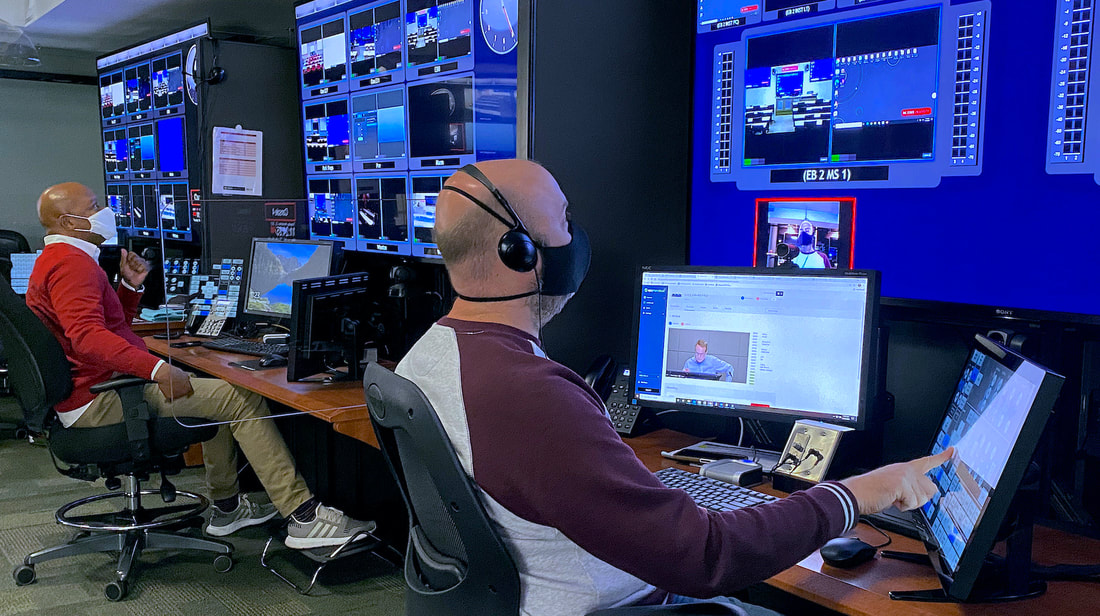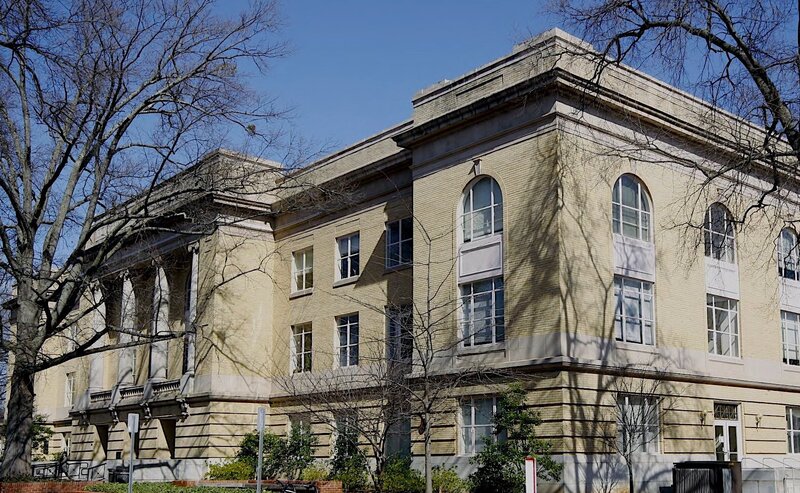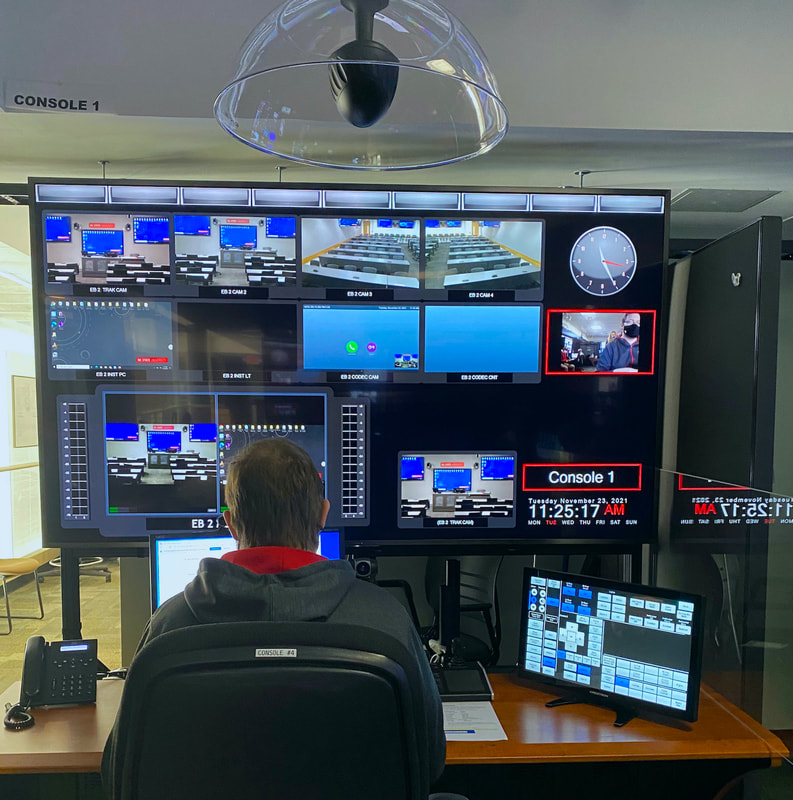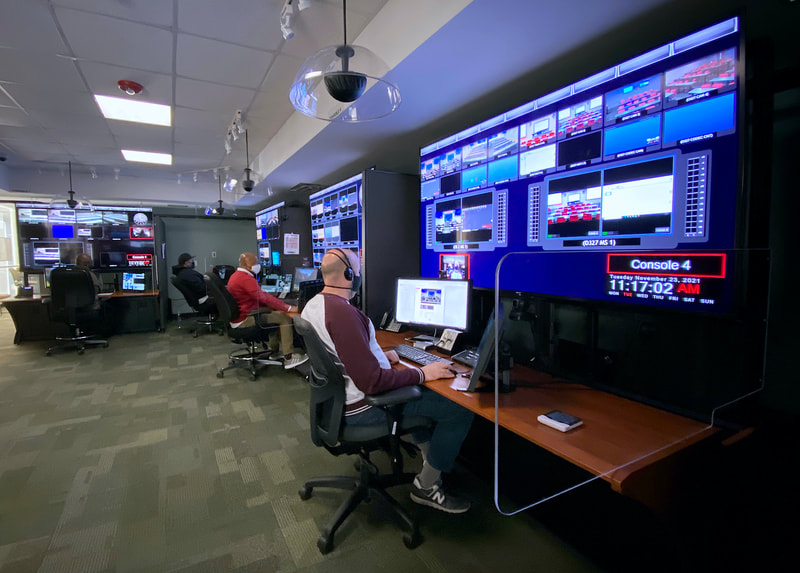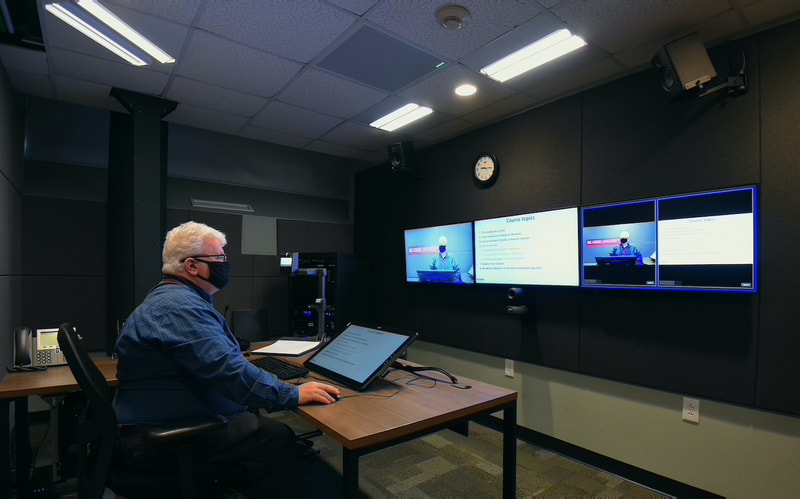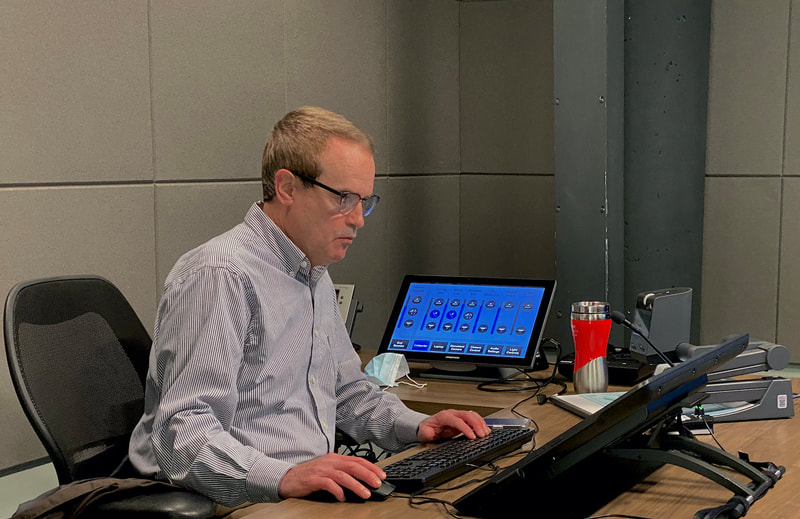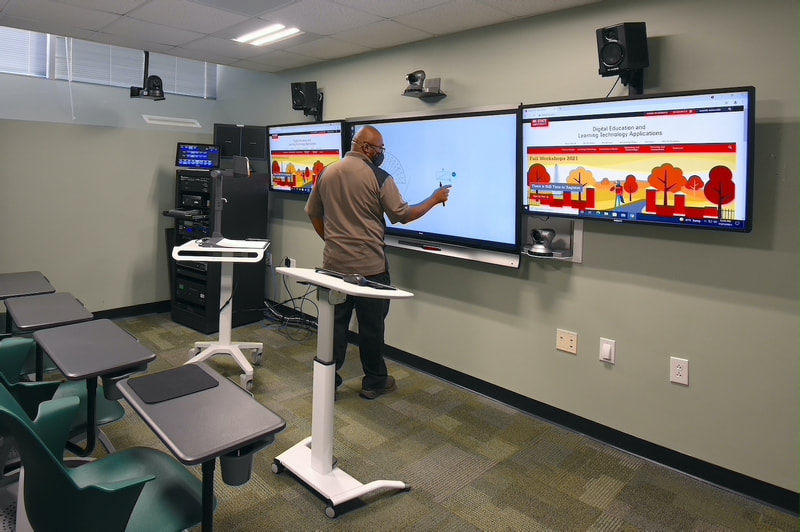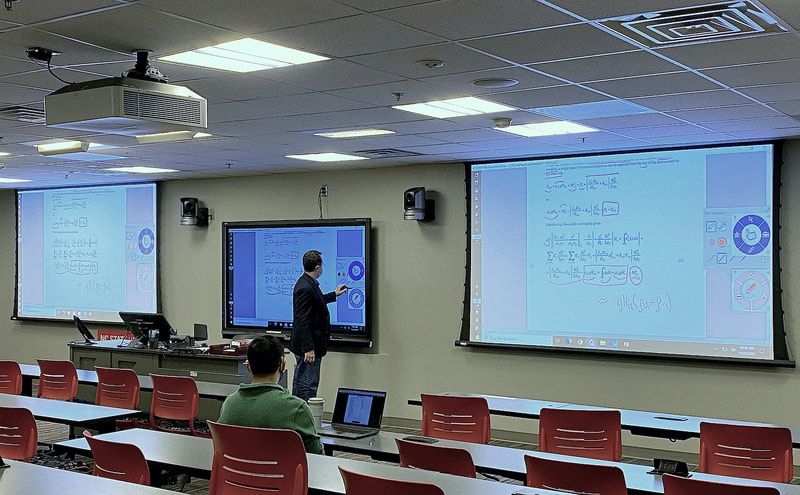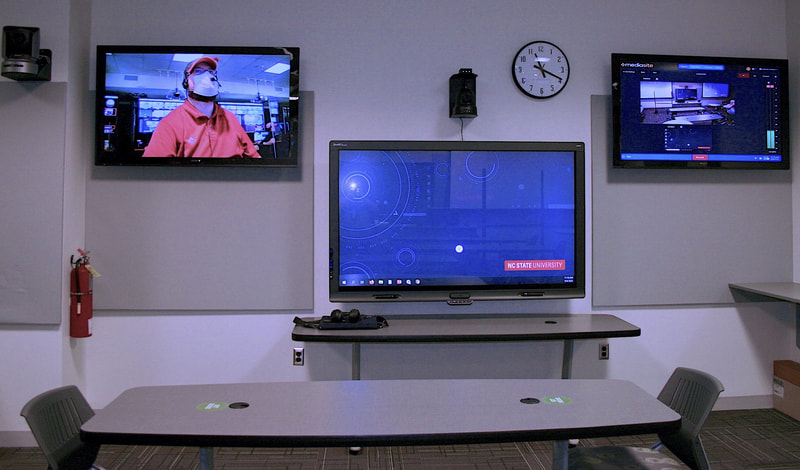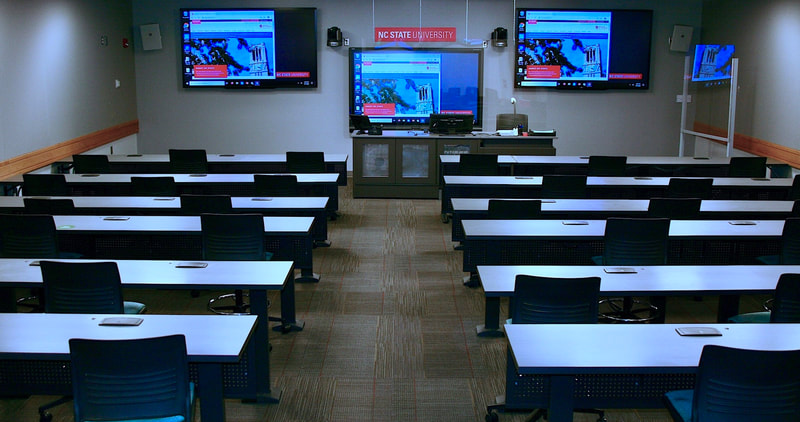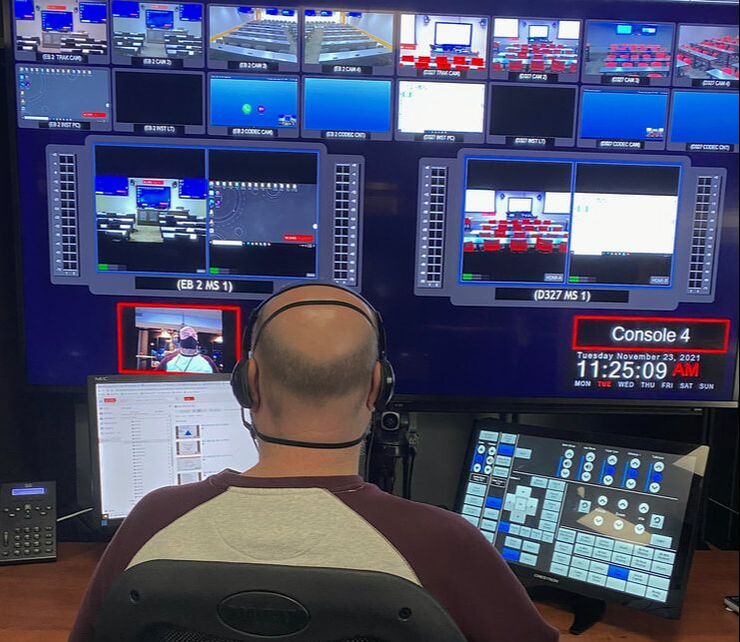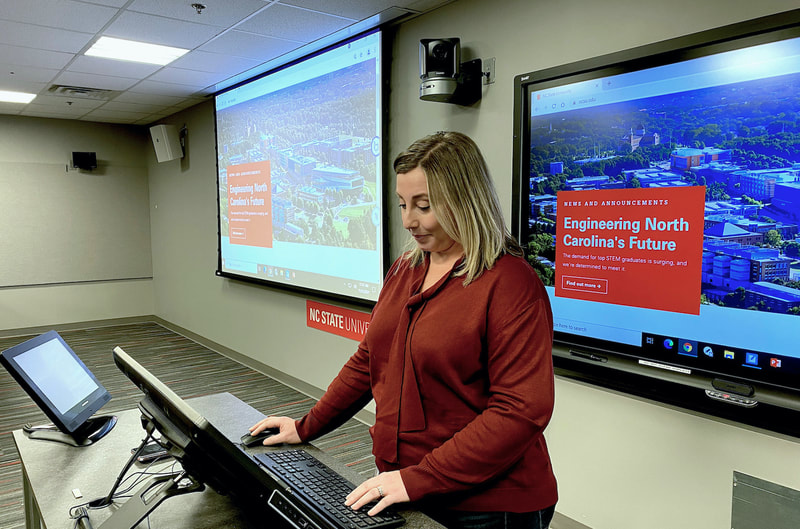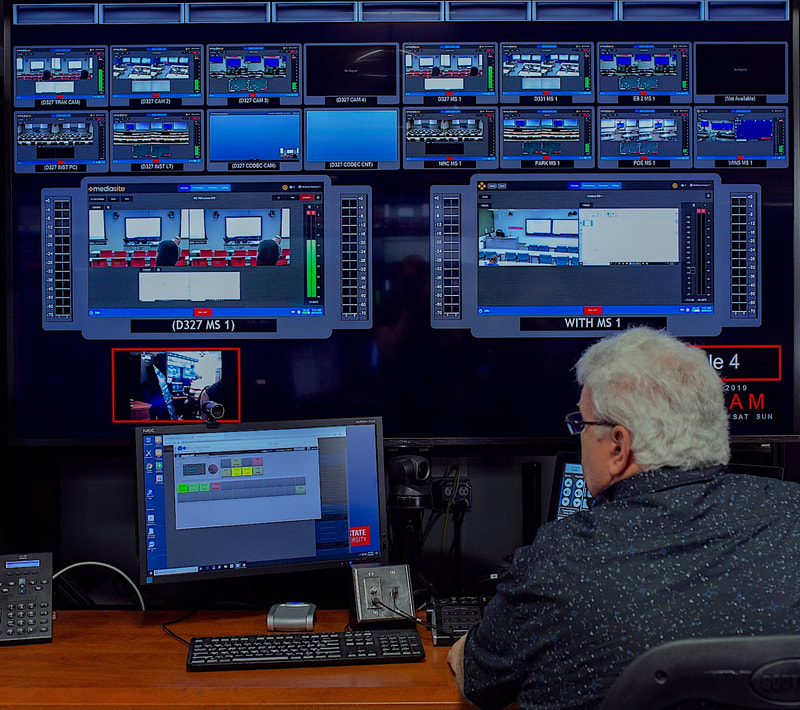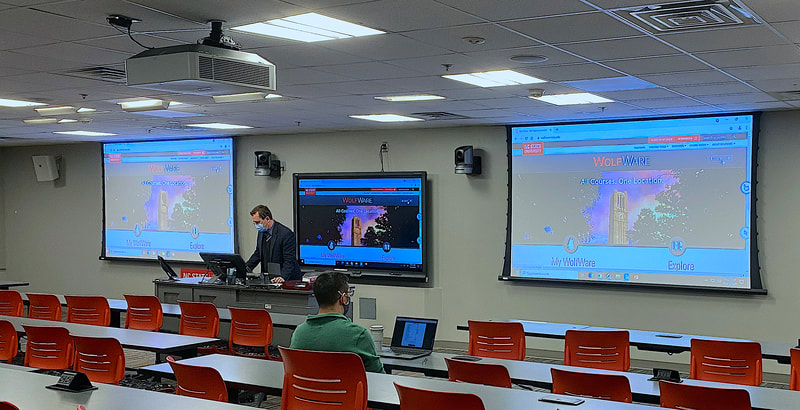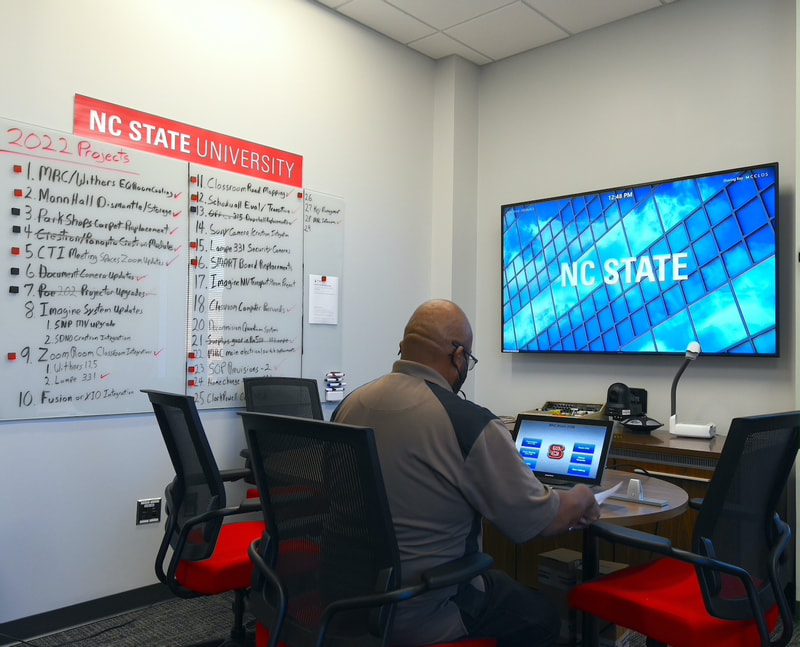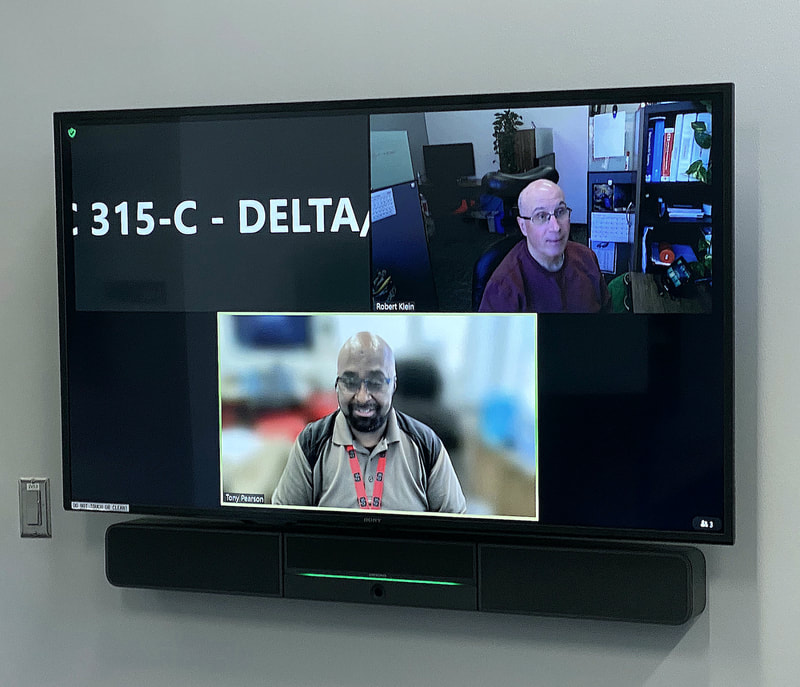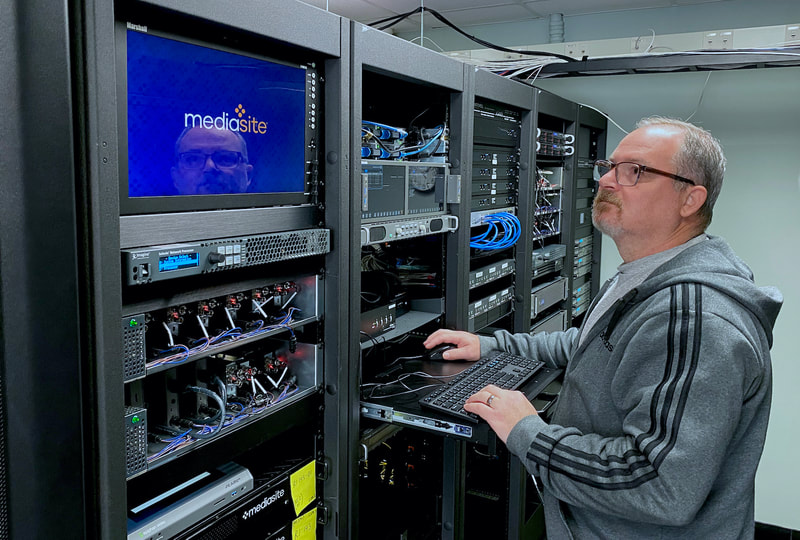CASE STUDY
North Carolina State University, Digital Education and Learning Technology Applications (DELTA)
Distance learning today and in the future
Tony Pearson, Senior Associate Director, Video Communication Services, DELTA, NC State
Tony Pearson, Senior Associate Director, Video Communication Services, DELTA, NC State
North Carolina State has long been a leader in distance learning – providing courses that students follow at home, at work, or wherever they are. We have been a leader in distance learning for nearly 40 years: today we serve more than 50,000 students around the world, and several of our online programs are rated in the top 10 by U.S. News and World Report (the leader in college rankings) and other reporting agencies.
About Digital Education and Learning Technology Applications (DELTA)
DELTA’s role within the Office of the Provost is to foster the integration and support of learning technologies in NC State’s academic programs, both on the campus and at a distance. We coordinate the funding and production of all distance-based credit programs and courses for the university. We promote high-quality education by extending the reach of the faculty and collaboratively applying expertise in technology and pedagogy in an efficient, effective and service-oriented environment.
Video Communication Services
Video Communication Services was started prior to DELTA in the 1980s. Courses were captured/recorded using physical media, tapes, then CDs, then DVDs that were shipped directly to students. During this time courses and special programs were also broadcast through many of the following methods, LPTV, Microwave, Satellite, ISDN, MPEG2, and H.323. Prior to H.323, Satellite and Microwave were primarily used for synchronous learning: remote students were watching course lectures at the same time as those who were actually present on campus. They could respond to the professor via two-way video (H.323) and /or phone bridges, giving a real sense of interaction with the class.
Once the internet became a reliable source to deliver high quality material, we began to move our courses online. The benefits were obvious: not just lower cost to distribute, but immediacy, interactivity, and the improved ability to use the courses synchronously or asynchronously, thanks to enhanced collaboration applications, and video on demand access.
What set NC State apart, was the demand for maintaining a professional, high quality broadcast standard approach to their production for distance education courses. The workflow was created with a Realtime production process. This included live transmissions and or synchronous connections for designated courses every semester. All this was achieved in the beginning by creating what was originally called a Studio Classroom now referred to as a media-enhanced classroom. Although these classrooms were used by traditional students on campus as well as those at a distance, they were not your standard classroom.
All classrooms were full production studios with specialized lighting, production switcher, character generators, desktop or ceiling microphones, and up to six cameras where required.
About Digital Education and Learning Technology Applications (DELTA)
DELTA’s role within the Office of the Provost is to foster the integration and support of learning technologies in NC State’s academic programs, both on the campus and at a distance. We coordinate the funding and production of all distance-based credit programs and courses for the university. We promote high-quality education by extending the reach of the faculty and collaboratively applying expertise in technology and pedagogy in an efficient, effective and service-oriented environment.
Video Communication Services
Video Communication Services was started prior to DELTA in the 1980s. Courses were captured/recorded using physical media, tapes, then CDs, then DVDs that were shipped directly to students. During this time courses and special programs were also broadcast through many of the following methods, LPTV, Microwave, Satellite, ISDN, MPEG2, and H.323. Prior to H.323, Satellite and Microwave were primarily used for synchronous learning: remote students were watching course lectures at the same time as those who were actually present on campus. They could respond to the professor via two-way video (H.323) and /or phone bridges, giving a real sense of interaction with the class.
Once the internet became a reliable source to deliver high quality material, we began to move our courses online. The benefits were obvious: not just lower cost to distribute, but immediacy, interactivity, and the improved ability to use the courses synchronously or asynchronously, thanks to enhanced collaboration applications, and video on demand access.
What set NC State apart, was the demand for maintaining a professional, high quality broadcast standard approach to their production for distance education courses. The workflow was created with a Realtime production process. This included live transmissions and or synchronous connections for designated courses every semester. All this was achieved in the beginning by creating what was originally called a Studio Classroom now referred to as a media-enhanced classroom. Although these classrooms were used by traditional students on campus as well as those at a distance, they were not your standard classroom.
All classrooms were full production studios with specialized lighting, production switcher, character generators, desktop or ceiling microphones, and up to six cameras where required.
Operational efficiency
As our Distance Education programs grew more classrooms were added and the need to increase classroom capacity was in high demand. During this period of growth, we started to see annual enrollment increases of 15 to 20%. This growth dictated the need for improved and efficient workflows. As a result of this growth, all designated control rooms supporting media-enhanced classrooms were reduced to equipment closets to provide additional seating capacity inside the classroom. This required a swift transition from a control room modal with dedicated technicians or video directors. Once a space was identified for a centralized control room now referred to as the CCR, phase one was implemented with two consoles to support, control, and monitor three media-enhanced classrooms remotely. One challenge was how to repurpose existing fiber no longer needed for microwave transmissions: With the CCR located in the heart of the main campus, all existing fiber runs had to be rerouted and additional runs added for a home run back to Ricks Hall Annex. The AV infrastructure design required the use of single mode fiber to transmit one SDI video source per fiber strand for a total of four sources per classroom. This placed serious limitations on the number of signals we could transmit back to the CCR. Including cameras and computer sources, a media-enhanced classroom might have anywhere from 12 to 16 video sources to be managed. The current fiber infrastructure only gave us four video channels per classroom. The AV design solution was to put a multiviewer in each classroom and send quad-split screen feeds over the fiber to the CCR.
That meant the technicians could see a limited number of sources and, by using routing controls, they could switch and manage various signals. A handicap was created, as the mutliviewer to multiviewer design provided bundled feeds of all sources transmitted from each classroom. These feeds could not be unraveled to provide true confidence feeds of other remote sources. Technicians had to be really creative with routing in order to see, monitor and control everything.
As our Distance Education programs grew more classrooms were added and the need to increase classroom capacity was in high demand. During this period of growth, we started to see annual enrollment increases of 15 to 20%. This growth dictated the need for improved and efficient workflows. As a result of this growth, all designated control rooms supporting media-enhanced classrooms were reduced to equipment closets to provide additional seating capacity inside the classroom. This required a swift transition from a control room modal with dedicated technicians or video directors. Once a space was identified for a centralized control room now referred to as the CCR, phase one was implemented with two consoles to support, control, and monitor three media-enhanced classrooms remotely. One challenge was how to repurpose existing fiber no longer needed for microwave transmissions: With the CCR located in the heart of the main campus, all existing fiber runs had to be rerouted and additional runs added for a home run back to Ricks Hall Annex. The AV infrastructure design required the use of single mode fiber to transmit one SDI video source per fiber strand for a total of four sources per classroom. This placed serious limitations on the number of signals we could transmit back to the CCR. Including cameras and computer sources, a media-enhanced classroom might have anywhere from 12 to 16 video sources to be managed. The current fiber infrastructure only gave us four video channels per classroom. The AV design solution was to put a multiviewer in each classroom and send quad-split screen feeds over the fiber to the CCR.
That meant the technicians could see a limited number of sources and, by using routing controls, they could switch and manage various signals. A handicap was created, as the mutliviewer to multiviewer design provided bundled feeds of all sources transmitted from each classroom. These feeds could not be unraveled to provide true confidence feeds of other remote sources. Technicians had to be really creative with routing in order to see, monitor and control everything.
Migration to IP
Moving forward it was determined that we needed an open architecture solution to provide flexibility and scalability for the next generation of remote monitoring and control in our CCR. We also needed it to be standards-based, which would secure the future without becoming bound to a proprietary solution which would limit future developments. The process for selecting a solution took almost four years. We looked at a broad range of products that were presently on or entering the market. Due to our aging routers and multiviewer our focus was on open architecture solutions using industry-standard interfaces from signal acquisition, to signal delivery and, monitoring. As we looked to move away from dedicated SDI-connected routers towards an all IP processing platform it became obvious that an SDI to all IP solution would provide all the flexibility and scalability we required to replace systems that had reached end-of-life status. This also allowed us to continue use of our SDI legacy equipment as part of this new architecture.
Moving forward it was determined that we needed an open architecture solution to provide flexibility and scalability for the next generation of remote monitoring and control in our CCR. We also needed it to be standards-based, which would secure the future without becoming bound to a proprietary solution which would limit future developments. The process for selecting a solution took almost four years. We looked at a broad range of products that were presently on or entering the market. Due to our aging routers and multiviewer our focus was on open architecture solutions using industry-standard interfaces from signal acquisition, to signal delivery and, monitoring. As we looked to move away from dedicated SDI-connected routers towards an all IP processing platform it became obvious that an SDI to all IP solution would provide all the flexibility and scalability we required to replace systems that had reached end-of-life status. This also allowed us to continue use of our SDI legacy equipment as part of this new architecture.
|
"With the complexity of having multiple classrooms and our Centralized Control Room, Clark Powell's partnership in our transition to AV over IP was crucial to ensure that DELTA VCS maintains our growth potential and flexibility for years to come. Clark Powell's programmer has collaborated with us to integrate several equipment upgrades and continues to brainstorm with us on ways to make our Crestron workflow simpler and more efficient." Brandon Joyner CTS, Lead Technology Support Technician, DELTA |
The good news was that our research coincided with the development of the SMPTE ST 2110 standard. While we researched other standards and reviewed alternate proposals for IP connectivity. Our conclusion was that the SMPTE ST 2110 standard represented the most stable future for our infrastructure. We also had to be realistic about how much we could achieve in the first phase. We could not jump to an all ST 2110 system: we had to maintain our SDI infrastructure into which we had invested so much. So, our solution was to build a new all IP core at the CCR providing us the flexibility to deploy SDI to IP devices in our classrooms. The other challenge was the timeline. We had to fit this integration into the academic calendar, therefore we could not use any of the existing infrastructure until the end of the spring semester. We then had until mid-June to complete the installation. This left the month of July as our team’s learning time to dive in and figure out how to support these new technologies and be ready for the start of the fall semester in mid-August.
Partnership
ClarkPowell has been a strong technology provider for our Digital Education efforts on campus. A relationship that we have valued for over 20 years. They always took the necessary time to listen to us and our end-users while working as a strategic partner sharing their knowledge and expertise collaborating with our support teams to achieve our technology goals. Randy Lane (Account Manager), Steve Woodard (Design Engineer), and Kenny Burwell (Field Service) are truly the best at what they do and are always there when we need them.
I am proud of what we have accomplished working together. We have implemented a solid and sustainable audio visual support infrastructure that is transparent to our faculty and users.
ClarkPowell has been a strong technology provider for our Digital Education efforts on campus. A relationship that we have valued for over 20 years. They always took the necessary time to listen to us and our end-users while working as a strategic partner sharing their knowledge and expertise collaborating with our support teams to achieve our technology goals. Randy Lane (Account Manager), Steve Woodard (Design Engineer), and Kenny Burwell (Field Service) are truly the best at what they do and are always there when we need them.
I am proud of what we have accomplished working together. We have implemented a solid and sustainable audio visual support infrastructure that is transparent to our faculty and users.

